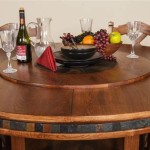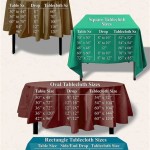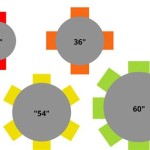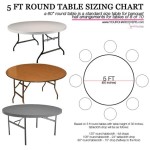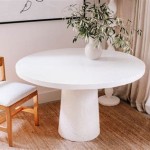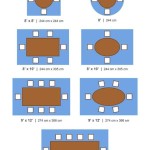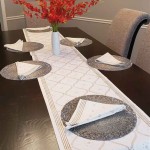Functions of Table Napkin Folding: Beyond Aesthetics
Table napkin folding, an art form often associated with fine dining and formal events, involves transforming a simple square of fabric or paper into visually appealing shapes. While the aesthetic appeal of well-folded napkins is undeniable, their function extends far beyond mere decoration. Table napkin folding serves several practical purposes, contributes to the overall dining experience, and communicates specific levels of formality and attentiveness to detail.
The practice of napkin folding dates back centuries, with evidence suggesting its presence in various cultures. Early forms were likely simpler and more functional, focused on keeping clothes clean. Over time, napkin folding evolved, incorporating intricate designs and becoming a significant element of table presentation in aristocratic and royal settings. Today, while still prominent in high-end restaurants and formal gatherings, napkin folding is also embraced in homes and smaller, more intimate settings, showcasing creativity and offering a personalized touch to the dining experience.
The evolution of napkin folding reflects changes in dining customs and societal values. The increasing complexity of designs mirrors a desire to impress and elevate the status of the meal. The modern resurgence of interest in table napkin folding suggests a renewed appreciation for craftsmanship and a desire to create memorable dining experiences.
Enhancing Hygiene and Cleanliness
One of the primary and most fundamental functions of a table napkin, regardless of its folded form, is hygiene. The napkin provides a readily accessible means to wipe hands and face during and after the meal, protecting clothing from spills and food stains. A strategically folded napkin, especially one that is easily unfolded and handled, encourages diners to use it effectively, minimizing potential messes and maintaining a clean dining environment.
The choice of material for the napkin also plays a crucial role in its hygienic function. Linen and cotton napkins offer superior absorption compared to paper napkins, making them more effective at wiping up spills and keeping hands clean. The quality of laundering and hygiene practices associated with reusable napkins is paramount to guarantee their cleanliness. Single-use paper napkins, on the other hand, offer a convenient and sanitary alternative, minimizing the risk of cross-contamination, especially in settings where hygiene is of utmost concern.
The placement of the napkin, whether folded or simply laid flat, also contributes to its hygiene function. Typically, it is placed to the left of the dinner plate or on the plate itself, providing immediate accessibility. The folded form, if chosen strategically, can also act as a visual cue, reminding diners to use the napkin before, during, and after the meal.
Communicating Formality and Setting the Tone
Napkin folding is a powerful tool for conveying the level of formality of an event. Simple folds, such as a basic rectangle or triangle, are suitable for casual gatherings and everyday meals. More elaborate and intricate folds signal a more formal occasion, such as a wedding reception, a corporate dinner, or a holiday celebration.
The complexity of the fold directly correlates with the perceived formality. Designs that require multiple steps, precise creases, and the creation of recognizable shapes – such as fans, birds, or flowers – indicate a higher level of attention to detail and a deliberate effort to create an elegant and sophisticated atmosphere. These elaborate folds demonstrate that the host or event planner has invested time and effort in creating a special occasion.
Beyond the complexity, the choice of napkin material and color also contributes to the overall impression. High-quality linen napkins in neutral colors, such as white, ivory, or gray, are generally considered more formal than paper napkins or brightly colored fabrics. The combination of an intricate fold with a luxurious material can elevate the dining experience and communicate a sense of luxury and refinement.
The arrangement of the napkins can also play a role. For instance, uniformly folded napkins placed neatly on each plate create a sense of order and precision, reinforcing the formal tone. In contrast, a more relaxed and informal setting might feature napkins casually arranged in a basket or simply placed next to each plate, reflecting a more laid-back atmosphere.
Adding Visual Appeal and Enhancing the Dining Experience
Napkin folding goes beyond mere functionality by introducing an element of visual artistry to the table setting. A creatively folded napkin can serve as a focal point, adding color, texture, and visual interest to an otherwise plain table. The aesthetic appeal of a well-folded napkin can enhance the diner's overall perception of the meal, making it feel more special and memorable.
The possibilities for napkin folding are virtually limitless, with designs ranging from simple geometric shapes to intricate representations of objects and animals. The choice of design can be tailored to the specific occasion, theme, or personal style of the host. For instance, a nautical-themed event might feature napkins folded into the shape of a sailboat, while a holiday celebration could incorporate folds resembling Christmas trees or snowflakes.
The color and texture of the napkin can further enhance its visual impact. Brightly colored napkins can add a pop of color to a neutral table setting, while textured fabrics, such as damask or jacquard, can add depth and visual interest. The integration of decorative elements, such as ribbons, flowers, or napkin rings, can further personalize the design and create a more visually appealing presentation.
Furthermore, the placement of the folded napkin can influence the overall visual impact. Placing the napkin on the center of the plate creates a focal point and draws attention to the place setting. Alternatively, placing the napkin to the side of the plate allows for more visual separation and can create a more balanced and harmonious composition. The overall goal is to create a visually pleasing arrangement that complements the other elements of the table setting and enhances the dining experience.
The careful selection of napkin folds can also subtly influence the diner's perception of the food. A particularly elegant and intricate fold might suggest a high level of culinary skill and attention to detail, subconsciously enhancing the diner's expectations for the meal to come. Conversely, a simple and understated fold might convey a sense of casual elegance and a focus on the quality of the ingredients rather than elaborate presentation.
In summary, while seemingly a minor detail, table napkin folding plays a multifaceted role in the dining experience. Its functions extend beyond the purely aesthetic, encompassing hygiene, communication of formality, and enhancement of the overall enjoyment of the meal. The art of napkin folding, when executed with skill and intention, can elevate even the simplest meal into a memorable and special occasion.

Dispenser Napkin Folds Sizes Explained

Folding A Napkin Into Pinwheel

4 Ways To Fold Napkins For A Table Setting Trendy Mami

6 Easy Napkin Folding Ideas Vision Linens

Learn The Fine Art Of Napkin Folding Foodal

Five Uses Of Dinner Napkins

Learn The Fine Art Of Napkin Folding Foodal

28 Creative Napkin Folding Techniques

Napkin Folding History Facts Instructions 2025

15 Easy Design Napkin Folding
Related Posts


